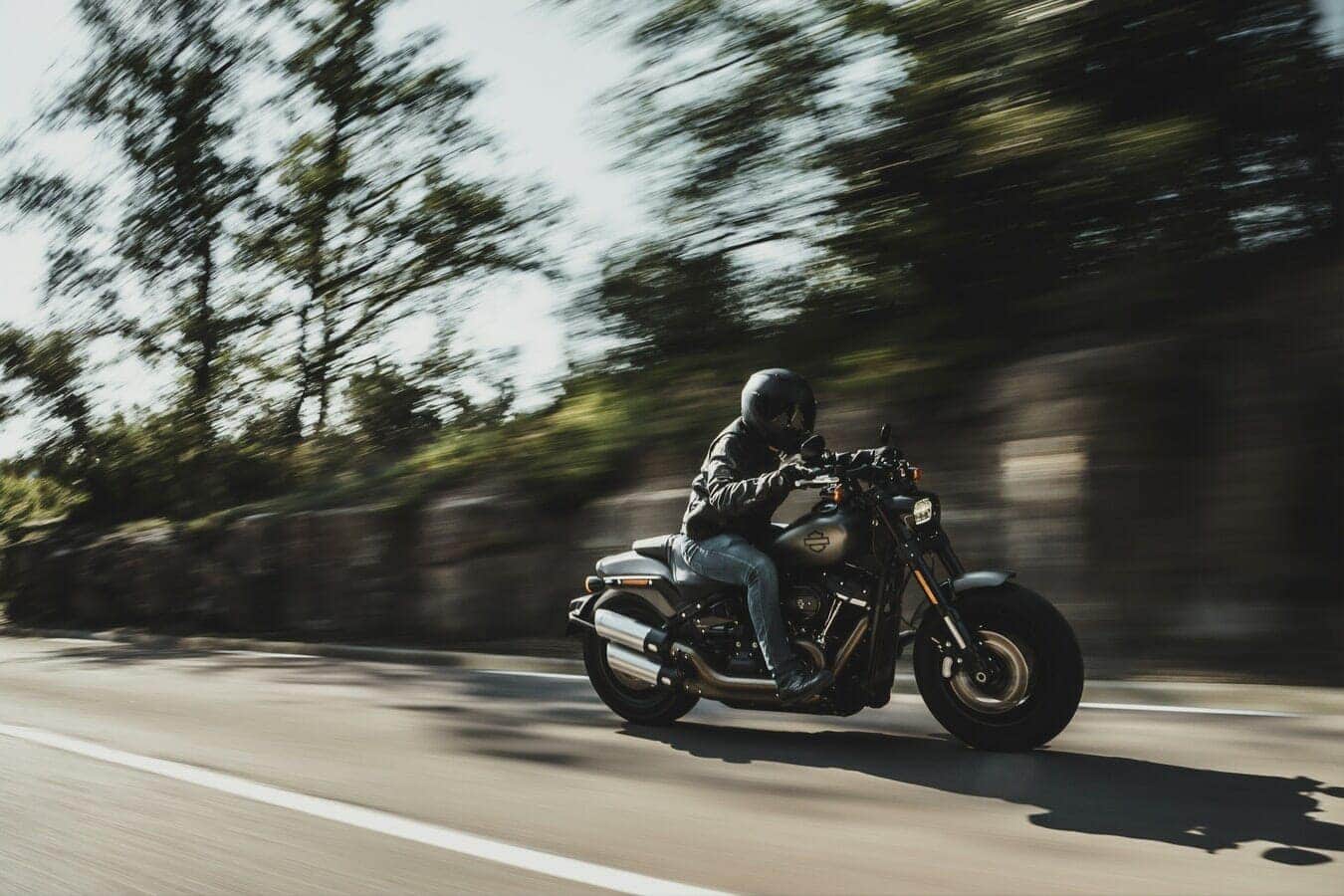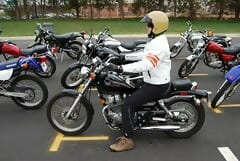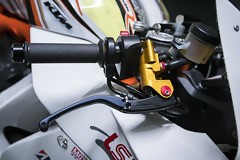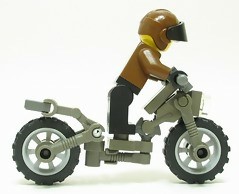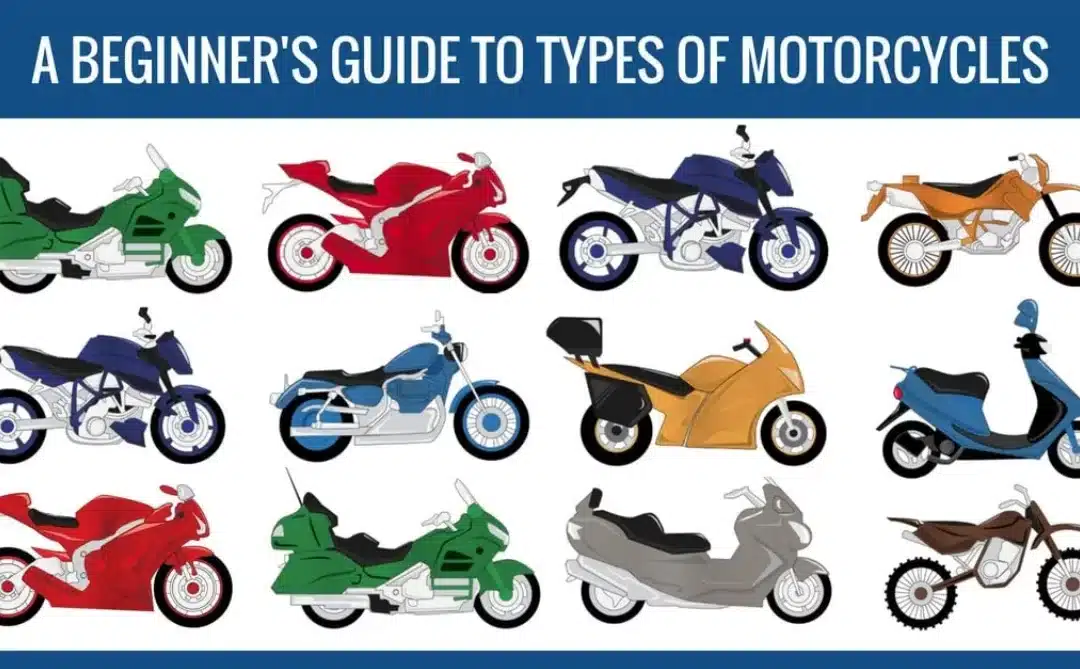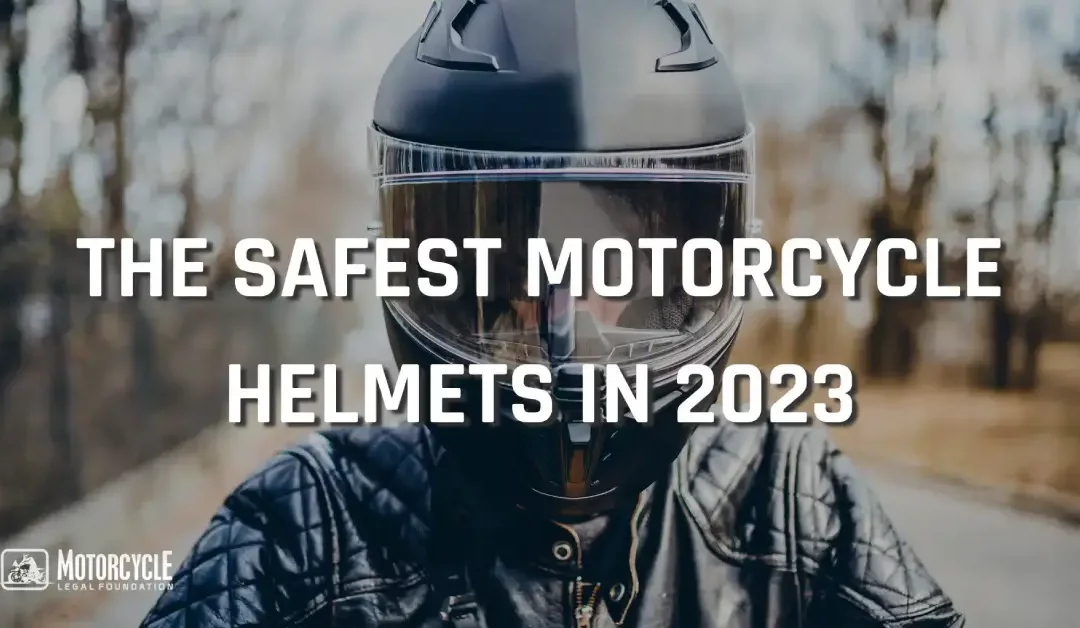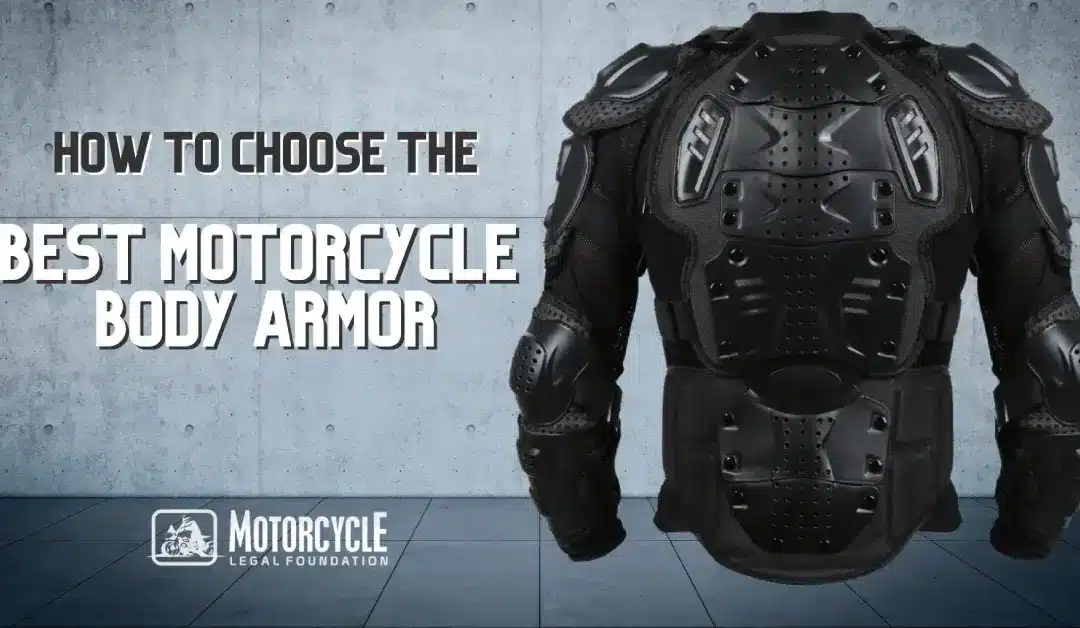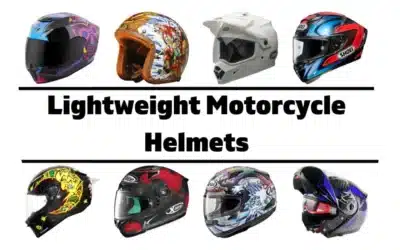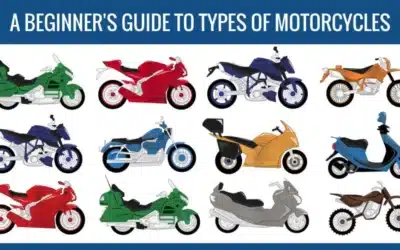Riding a motorcycle is a very freeing experience, and something that doesn’t require anyone else to make it an amazing adventure. Wanting to ride is great, but gaining experience is hard to do safely without proper training and patience. Learning to ride is only the beginning, so congrats for taking the first step in learning how to ride.
Take Your First Steps: Research, Riding and Control
When you look at motorcycling from the outside, it all can look the same. Two wheels, an engine, handlebars, and a seat. It doesn’t look too complicated. What apparel do you ride in? What laws does a motorcycle have to follow? How should you learn to ride, and what does everything on a motorcycle do? There are a lot of questions to be answered, and many answers can be confusing.
The first step before you make the big purchases of a motorcycle, a closet full of riding apparel, and motorcycle insurance may be to learn to ride. Believe it or not, some new motorcycle riders spend tens of thousands of dollars on motorcycle equipment before learning to ride. Some learn to ride, love it, and never look back. Others learn the basic skill and then discover they really don’t even like to ride! The best scenario may be to take a basic motorcycle course over a weekend or a handful of nights, and ensure you really want to be a motorcyclist. Rather than try to learn on your own, we suggest you take the initiative for professional training. Here are two options to consider:
- Motorcycle Safety Foundation Courses

- Private instruction
- Outside of group riding in a basic street skills class or a track day event, there are options available for private instruction. Some instructors from a local MSF chapter may have time available for one-on-one instruction and can offer more direct feedback to you than they can if in a group setting. The cost may be more expensive, so check with each organization on the options available. You may find an expert rider in your local area that isn’t part of a traditional school too. Ask around at local motorcycle dealerships if they know of any private instruction opportunities.
Buying Your First Motorcycle
Once you’ve made the decision to be a motorcyclist, and have the basic skills ready to hone, you’re ready to choose your first motorcycle. The big question is, “What is your purpose for riding?” If you plan to commute to work or school, ride on the weekends, or possibly race only on a closed track, having a touring motorcycle doesn’t make a lot of sense. Having something with a lot of power may not be a great idea either. You will want to stay within your comfort zone, which may mean purchasing a used motorcycle initially while you really decide if you enjoy motorcycling as much as you thought you would after your basic riding class.
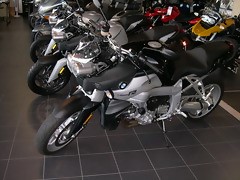
Once you have an approximate size in mind that you will fit well on, you’re going to find that there seems to be too many options available for the type of motorcycle you want. If you’re more focused on racing, the choices narrow down quickly. If you’re pretty open and want something that can do a little of everything, you may need to review the types of motorcycles available to get a preview of what to look for. Within each type available, some will be a better option for a new rider.
Invest in Motorcycle Riding Apparel
You may have seen the acronym ATGATT (All The Gear, All The Time) used in online articles and it needs to be your new motorcycle riding mindset. Motorcycle specific safety gear is arguably an option to some, but as a new rider it should be a requirement. There are many options available for motorcycle specific safety apparel, and choosing the best gear for you is going to be difficult. We have outlined in depth how to choose the ultimate safety gear, and below we’ll add a few points as a summary for each main safety item you should consider:
Helmet
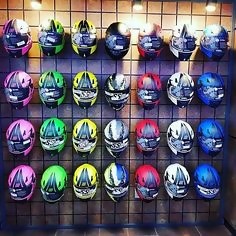
Jacket
A quality motorcycle jacket will offer safety beyond a regular designer jacket or long-sleeve clothing. As a new rider, you’ll want superior protection from the environment and just in case you have an accident. Consider it the second most important gear to wear while riding a motorcycle. We’ve covered what to shop for with an article on the safest motorcycle jacket. Give it a read when you have extra questions.
Gloves
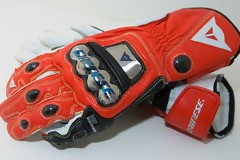
Boots
Motorcycle specific riding boots are going to something you may or may not want to invest in depending on when, where, and how often you ride your motorcycle. A good hiking boot may be good enough to ride in, but the laces on the boots can become a problem with entanglement. A proper motorcycle boot will offer protection, comfort, and good tread between you and the road surface. Like gloves, they have multiple material options, waterproof or water resistant options, and height above the ankle.
Pants
Motorcycle riding pants are a fantastic choice over a set of shorts or designer jeans. Shorts offer no protection for your legs while riding and shouldn’t be an option while riding a motorcycle. Designer jeans may be considered acceptable, but they don’t offer much for abrasion resistance if you have an accident. We recommend a simple set of riding pants which will offer superior protection and comfort for not much more than a set of designer jeans
Riding Accessories
Motorcycle accessories doesn’t always equate to performance parts, adding some chrome, or something fresh to your motorcycle. When riding, there are some two additional items to consider that will make your ride more comfortable and safe:

- Eye protection – Eye protection can come in various styles, from riding glasses that mimic sunglasses to tinted visors for your helmet. If you’re only wearing a ½ helmet, you’ll definitely want a set of riding glasses or goggles to protect your eyes. Riding specific eyewear will be shatter-resistant and may come in various tinting options to help with bright daylight or low light condition. It should also wrap around your face a little to prevent wind from going around your eyewear and causing wind or debris to get in your eyes while riding. If you wear a ¾ or full-face helmet, you may be able to forego a second set of eyewear because the visor will protect your eyes from debris and sunlight. You can always add a tinted set of riding glasses with a clear visor, which gives you options for all sunlight levels without the need to change a tinted visor when it gets dark.
Know Your Local State Motorcycling Laws
Every state allows motorcycles to be ridden on public highways and surface streets, but not all 50 states abide by the same set of laws. Each use similar laws, but they can vary slightly based on the rider’s age, eye protection required, if lane splitting is allowed, if mufflers should be used, passengers being on the motorcycle, and daytime headlight use among others. We’ve covered these topics in an article specifically covering motorcycle laws, but you should take it upon yourself to study your local city and state laws to familiarize yourself with what is and isn’t acceptable when you ride. If you plan to take a longer trip into a neighboring state, be sure to check their motorcycle riding laws to ensure you’re going to legally ride there. They may or may not follow your home state rules 100%, and you don’t want to be caught off-guard.
Familiarize Yourself with Your Personal Motorcycle
Knowing your own motorcycle will become second nature as you put more miles on the odometer. Your suspension, controls, and levers should be set to your body dimensions and adjusted so that your motorcycle feels good when riding. Having controls adjusted so that they are hard to use, suspension set too soft or hard for your body weight and height, and levers in difficult to reach places reduces your reaction time to events on the road and makes the ride harder than it needs to be. These are the major controls and parts of your motorcycle that you should become familiar with and adjust to fit your riding position before you take your first trip around the block:
- Throttle – The throttle is connected from the handlebar down to the engine. It controls engine speed via a cable that runs from the handgrip down to the engine. As you rotate it and let go, you should see and feel that the throttle rotates easily without binding and will return to a closed position if you take your hand off the control.

- Rear brake – Your rear brake system may operate hydraulically or via a cable from the lever to the rear wheel in a similar fashion as the front. It is a smaller percentage of your braking system’s power, but over-application can cause a danger situation if the rear wheel skids. Your right foot will use a lever to apply the rear brake, and you will target using it smoothly like the front brakes.
- Gearshift lever – The gearshift lever will be by your left foot, and most likely use a down and up shifting pattern in a linear sequence to change between the gears. You’ll hear the term “1 down, 4 up” or “1 down, 5 up” frequently used in reference to the shifting on your motorcycle. What that means is that the lowest gear (1st gear) is all the way down, neutral is 1 click up, and the higher gears are up from there. You’ll either push down with your toes or the ball of your left foot for downshifting, and lift up with your toes to shift to a higher gear. Each movement of the lever should offer a solid click that you can hear with your ear and feel with your foot, and when you let go it should return to a center position for the next gear change.
- Clutch lever – Your clutch level will be on the left handlebar and you will use your left hand to squeeze the lever to disengage the clutch. Your motorcycle may have a cable connected to the lever, or it may have a master cylinder that pushes fluid to disengage the clutch. In either case, your level should move freely and smoothly as you squeeze and slowly release the lever.

- Know how to position your body – Body positioning is a strategic placement on the motorcycle ride that allows you comfort and the ability to lean the motorcycle without turning the handlebars. You should sit comfortably on the motorcycle, but be able to move side to side on the seat to adjust your position.
- Conduct a Pre-ride Inspection – Every time you ride you should take a few minutes to check your motorcycle to ensure it’s also ready to ride. The Motorcycle Safety Foundation has an acronym called T-CLOCS: Tires/wheels, Controls, Lights/electrics, Oils/fluids, Chassis, and Stands. This is the mindset you need before every ride and here are the things to check for:
- Tires & Wheels: check for tread depth, debris in the tires that may cause a flat, and check/adjust the air pressure while the tires are cold. Check the condition of the spokes (if applicable style) or the wheel for cracks. Each bearing should spin freely without binding, and each seal should not be oozing grease out. Check that the brakes work and don’t drag. Check that the pads or shoes are in good condition and have material left on them. If they are very thin, replace them before you ride
- Controls: Check the handlebars are straight and secured to the motorcycle with all control levers straight. Each should move correctly without binding. Check that they are adjusted so you can easily access them while riding and their position is comfortable for your hands and feet to use. Check the cables and hoses for cracks, leaks, and that they function correctly when the handlebars are turned fully in each direction. Check the throttle for fully opening and snapping shut when the hand grip is let go. It should not open or rev the engine when the handlebars are turned.

- Oils & Fluids: Check that each fluid, whether that’s engine or transmission oil, brake fluid, engine coolant, or fuel, is full and clean for a ride. If anything is low, it needs to be filled to the manufacturer recommendation. If it’s ready to be serviced, that should be done prior to the ride.
- Chassis: Check the motorcycle frame for cracks, loose parts, and paint cracking or falling off. Check the steering head bearings move freely and the rear swing arm bushings also move freely. Review the suspension for leaks from the front forks or rear shock(s). Each should move freely. Check that the drive chain or driveshaft is clean, lubricated, and tightened to the manufacturer suggestion. If your motorcycle is equipped with a drive belt (instead of a chain), check that it is clean and correctly tightened. They do not require lubrication. The sprockets for the belt or chain should be in good condition without cracks, missing or rounded off teeth. If they are showing signs of wear, have them replaced.
- Stands: If your motorcycle has a center stand, ensure it does not have any cracks or it is not bent. It should have springs that hold it in the up position. Make sure it is held up away from the ground. If your motorcycle has a side stand, look for cracking and bends as you would the center stand. It should also have springs that hold it to the motorcycle frame when in the up position. It may have an electric switch that will turn off the ignition if the stand is down. Ensure that works correctly, and it only prevents the motorcycle from running when the stand is down.
Practice Makes Perfect
Taking a ‘learn to ride’ class over a weekend or a few nights is an excellent way to get the basics of riding a motorcycle, using the controls, and things to watch out for. While they get you started, these classes won’t prepare you for every scenario you’ll see riding a motorcycle, nor will it help you hone your skills to an expert level. We recommend riding as much as you can safely in a safe closed environment until you’re comfortable with venturing out with other traffic. Some riders spend a significant amount of time using a large open parking lot to ride and practice in. Others use their neighborhoods around heir house to slowly gain their skills. Others have bigger ambitions for racing and utilize closed course days at an official racetrack to gain more experience. The key to all of them is riding in a safe environment, whether that’s in a parking lot or a closed racetrack. Seat time is the only way to get better, so practce will make perfect.
Advice from the Riding Pros
We asked many of the expert riders we know on what advice they would pass on to beginner riders. These are the tips they offered, which we’re passing on to you:
Ride defensive – Riding defensively on a motorcycle is a little bit of a game where everyone is out to get you. You need to continually adjust your position within the lane to offer an escape path and keep distance between you and other riders and vehicles. You need to constantly scan for road debris to maneuver around, and be prepared to take evasive action when the time comes.
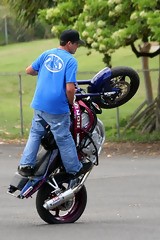
Never overtake in blind corners – Passing on a motorcycle is sometimes necessary to stay safe, but take caution of passing in a blind corner. You never know what is waiting around that corner, whether it could be a large vehicle, animals in the road, or debris in your riding path. Only pass when conditions are safe to do so, and you can see exactly where you’re riding to.
Use indicators while changing lanes or overtaking – Use your turn indicators to signal that you intend to turn or overtake another vehicle. It sounds simple, and yet it’s very effective to let other vehicles know what you’re going to do. Remember, you always want to be seen, and having a flashing signal is a great way to get other’s attention.
Don’t forget to turn your choke off – If you have a motorcycle that utilizes carburetors, you should also have a choke that will enrichen the fuel mixture when starting the engine. The weather may dictate if the choke should be used, and using it in colder weather may be the only time you need to use it. If you do use it, be sure to turn it or push it off when the engine is warm. Continually running the engine with the choke on may foul your spark plugs and require premature maintenance.
Beware of road hazards – It would be great if you always had perfect pavement without debris in your path of travel. But, the truth of it is, most often you won’t find that pavement Zen. If you’re riding with your head up and eyes out to the horizon where you want to go, you’re most likely able to spot road hazards like pot holes, bumps, dips, and road debris. One way to recognize objects in your path is to watch vehicles ahead of you. Do they swerve to avoid something, do they change position in the lane, etc.? They can indicate something ahead of you. Just remember that cars and trucks can travel over something that you may not be able to. You may need to swerve around something that they drove over.
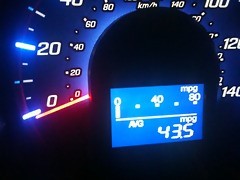
Avoid carrying passengers and cargo starting out – Riding with a group of friends is a great experience, and riding with a passenger is fun. When you’re first starting to ride a motorcycle, a passenger is added weight that you may not understand how to account for on the motorcycle. It’s a good idea to avoid passengers until you have some riding miles under your belt, so that when you add an additional amount of weight you can ride safely with it. In addition to people, be cautious of adding large boxes or long poles to your motorcycle for any reason. They also add difficulty to your ride.
Maintain a safe speed – Finding a safe speed to ride at will take an evaluation of the environment and how quickly you can react. If you’re riding alone on a stretch of open road, you can probably ride a higher speed. You should have less obstacles to worry about, and you have more ability to maneuver and stop if the situation calls for it. If you’re in heavy traffic, obviously you’re probably not able to ride at a high rate of speed. Traffic with other motorists will most likely cause you to slow down and be ready to avoid other vehicles with defensive riding.
Be cognizant of other vehicles – There are 32 other vehicles on the road for every registered motorcycle that is being ridden. Most, if not all, of those 32 other vehicles are larger and heavier than you and your motorcycle. That means you need to respect their space and stay defensive at all times. You’re smaller than everything on the road, have the best maneuverability, and are the hardest thing to see too. Stay out of blind spots, ride safe, and arrive alive.
Make yourself seen – You are probably at some point going to ride at low daylight levels or at night unless you have a steadfast rule of only riding when the sun is high in the sky. There are some differences in strategy for each because of the difference in light levels and your ability to be seen by other motorists. We’ve covered night riding in another article, and one big key to riding safe is your visibility with a headlight and high-visibility gear. When you look for new motorcycle gear consider those with retro-reflective patches that direct light back to the source giving them a glowing effect. It will help you be seen in low light levels.
Follow all traffic laws – Riding in your home area, it’s pretty easy to know what the laws are. You probably reviewed them when you took an MSF rider class or in order to get your license through the local DMV office. When you start to venture outside of that known area, you may cross state lines that have different laws. Check out this article on motorcycle laws that identifies six major laws pertaining to motorcycles that you should know about.
Avoid bad weather conditions – Inclement weather happens, and sometimes you get caught riding in less than ideal weather. Water obviously makes the road surface wet, but when mixed with oil it can become very hazardous. We’ve covered how to stay safe riding in the rain and getting to your destination dry in-depth. It’s best to avoid riding in inclement weather, if possible. It’s usually not your ability to ride that makes it dangerous. It’s the other motorists and a slick riding surface that make it tough.

Keep a tool pouch and first aid kit on your motorcycle – Storage is generally limited on a motorcycle, but having a small tool pouch and basic first aid kit can really save you on a ride. Given how little space there is, the tools should be kept to small wrenches in just the most commons sizes your motorcycle uses. That may be 3/8” – 5/8” on an American motorcycle or 8mm – 14mm on an import motorcycle. You can often find a set of small combination wrenches online and then add a couple screwdrivers to the set for a quick emergency tool kit. The basic first aid kit doesn’t have to be anything special. Ointment, bandages, etc. You can buy a small kit online also and carry it as a ‘just in case’ emergency kit.
Always ride in the safest lane – If you ask three people which lane is the safest, you may get three different answers. The truth is, there isn’t one lane that is always best for every situation. The safest lane may change depending on what you’re riding around and through. Being close to the off-ramp may be a good option, and sometimes that escape path could be to your left or your right. The safest lane is the one that gives you great visibility, allows you to see the road ahead well, and keeps you safe.
Knowing all the tips that experienced riders offered, it’s pretty easy to justify not doing something if they recommended against it. The harsh reality of motorcycle riding is that it’s not as forgiving as driving an enclosed car because it doesn’t have a big metal safety cage surrounding you. Your riding apparel is your major safety cage, and it isn’t nearly as thick and strong as a designed metal body. The biggest mistakes new riders make are misjudging their safety, the road and traffic conditions, and their skill level. Riding should be seen as a life-long adventure, and it doesn’t need to be rushed. Your skills will grow with time and miles ridden as long as you keep your safety as your first priority. Invest in quality motorcycle safety apparel and an appropriate motorcycle for your skill level, and you’ll have a long riding career. Eventually you’ll be the experienced rider that can offer new riders those same tips and add a few of your own.

